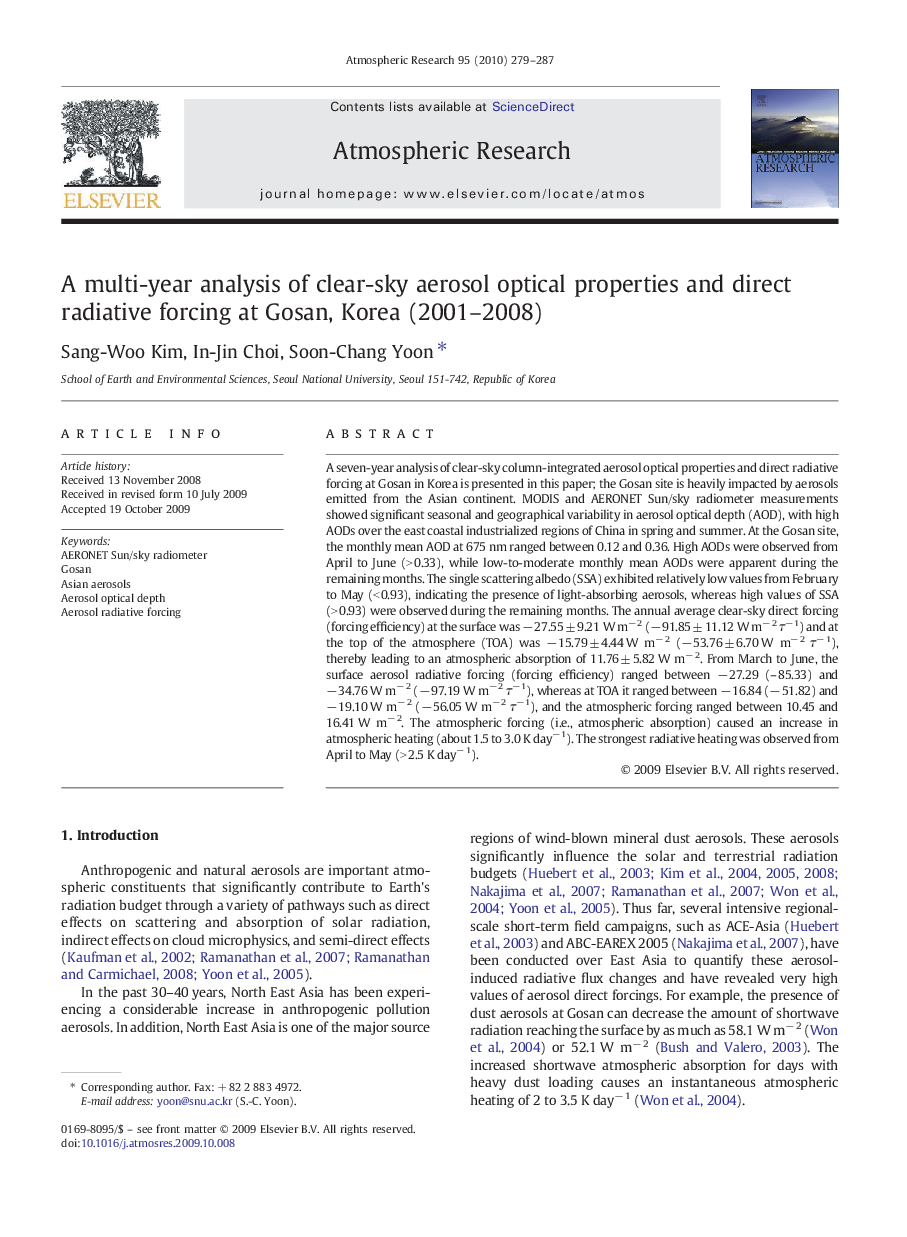| کد مقاله | کد نشریه | سال انتشار | مقاله انگلیسی | نسخه تمام متن |
|---|---|---|---|---|
| 4450658 | 1620568 | 2010 | 9 صفحه PDF | دانلود رایگان |

A seven-year analysis of clear-sky column-integrated aerosol optical properties and direct radiative forcing at Gosan in Korea is presented in this paper; the Gosan site is heavily impacted by aerosols emitted from the Asian continent. MODIS and AERONET Sun/sky radiometer measurements showed significant seasonal and geographical variability in aerosol optical depth (AOD), with high AODs over the east coastal industrialized regions of China in spring and summer. At the Gosan site, the monthly mean AOD at 675 nm ranged between 0.12 and 0.36. High AODs were observed from April to June (> 0.33), while low-to-moderate monthly mean AODs were apparent during the remaining months. The single scattering albedo (SSA) exhibited relatively low values from February to May (< 0.93), indicating the presence of light-absorbing aerosols, whereas high values of SSA (> 0.93) were observed during the remaining months. The annual average clear-sky direct forcing (forcing efficiency) at the surface was − 27.55 ± 9.21 W m− 2 (− 91.85 ± 11.12 W m− 2τ− 1) and at the top of the atmosphere (TOA) was − 15.79 ± 4.44 W m− 2 (− 53.76 ± 6.70 W m− 2τ− 1), thereby leading to an atmospheric absorption of 11.76 ± 5.82 W m− 2. From March to June, the surface aerosol radiative forcing (forcing efficiency) ranged between − 27.29 (– 85.33) and − 34.76 W m− 2 (− 97.19 W m− 2τ− 1), whereas at TOA it ranged between − 16.84 (− 51.82) and − 19.10 W m− 2 (− 56.05 W m− 2τ− 1), and the atmospheric forcing ranged between 10.45 and 16.41 W m− 2. The atmospheric forcing (i.e., atmospheric absorption) caused an increase in atmospheric heating (about 1.5 to 3.0 K day− 1). The strongest radiative heating was observed from April to May (> 2.5 K day− 1).
Journal: Atmospheric Research - Volume 95, Issues 2–3, February 2010, Pages 279–287